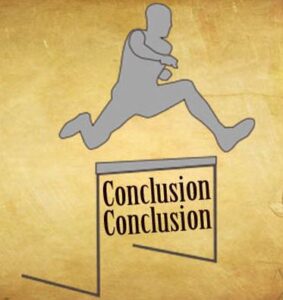 The next time someone tells you, “Don’t jump to conclusions!” just smile. You can’t help it – and neither can that person.
The next time someone tells you, “Don’t jump to conclusions!” just smile. You can’t help it – and neither can that person.
You come home and walk into the kitchen. There’s a big bite out of the angel food cake on the table, surrounded by crumbs. Your dog usually meets you at the door … but doesn’t this time.
You can’t avoid doing this. But being mindful is useful.
As Mark Twain said, “It ain’t what you don’t know that gets you into trouble. It’s what you know for sure that just ain’t so.”
We’re all suckers for a good story. But sometimes we don’t know the difference between what we see or experience and what we’re telling ourselves.
Shortcut and Pitfall
We’re presented with a limited amount of information — and time — and need to make a decision. The good and bad news is that our brains are great at “filling in the gaps.”
Here’s when jumping to conclusions is efficient. If what we conclude is likely to be right, and the cost of an occasional mistake is low, then this saves us time and effort. But it’s much riskier when you’re in an unfamiliar situation, the stakes are high, and there’s no time for research.
People talk about having intuition. Many times this has to do with your unconscious mind. (It, after all, collects 40 million bits of information per second, versus the 40 in your conscious mind.) Know that this part of your brain is more likely to believe things than your skeptical frontal cortex. That’s one reason you’re more easily influenced by the empty promises of commercials when you’re tired and don’t want to make the effort to think.
Watch Out for What You “Know”
You’re also susceptible to “confirmation bias.” Once you have formed an opinion on something, you look for information that supports this.
One example is the “halo effect.” This is your tendency to like (or dislike) everything about a person, including the things you haven’t seen. If you think Kendra is a nice person, then you’re predisposed to believe she has qualities you like — such as honesty — even if you’ve never seen her act this way.
It’s called “what you see is all there is” (WYSIATI).
This is also one of the reasons that first impressions are so important. Unfortunately, when information arises later that contradicts what we thought we knew, too often we ignore it. Our brains prefer the simpler, consistent story that we created versus the messier truth.
Raising the Bar
Here are three ways you can pay more attention to the conclusions you’re jumping to.
- Ask “What do I need to know before I can reach a sound opinion or decision?” This helps you get beyond WYSIATI.
- Watch your meetings. People give undue weight to those who speak early and assertively in group discussions, and then often line up behind them. Make sure everyone expresses an opinion — perhaps even asking people to create a written summary of their positions before the gathering — to make sure diverse opinions are shared.
- Notice when new information on a person or situation doesn’t seem to match what you expected. Don’t be so quick to dismiss this as an aberration. Instead, check it out.
Want to be more mindful about decision-making? Then download the one-page “Ladder of Influence” to learn the steps your brain goes through in this process — and where you’re most likely to be leaping.
